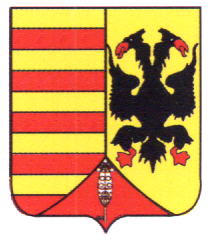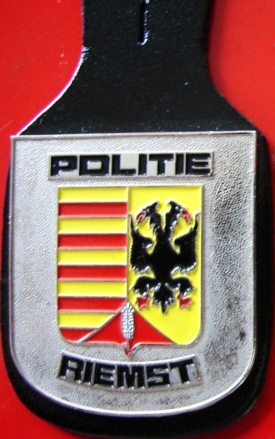Riemst: Difference between revisions
Knorrepoes (talk | contribs) m (Text replacement - ": " to ":") Tags: Mobile edit Mobile web edit |
Knorrepoes (talk | contribs) m (Text replacement - " :[[" to " : [[") Tags: Mobile edit Mobile web edit |
||
| Line 1: | Line 1: | ||
'''RIEMST''' | '''RIEMST''' | ||
Province :[[Limburg (België)|Limburg]]<br/> | Province : [[Limburg (België)|Limburg]]<br/> | ||
Additions :1977 Herderen, Kanne, Millen, Val-Meer, Vlijtingen, Vroenhoven, Zichen-Zussen-Bolder | Additions :1977 Herderen, Kanne, Millen, Val-Meer, Vlijtingen, Vroenhoven, Zichen-Zussen-Bolder | ||
Latest revision as of 06:26, 13 August 2024
RIEMST
Province : Limburg
Additions :1977 Herderen, Kanne, Millen, Val-Meer, Vlijtingen, Vroenhoven, Zichen-Zussen-Bolder
Official blazon
Gedeeld 1. gedwarsbalkt van tien stukken van goud en van keel 2. in goud een dubbele adelaar van sabel, gebekt, getongd en gepoot van keel; ingedreven punt:in keel een omgekeerde Sint-Servaassleutel van zilver.
Origin/meaning
The arms were officially granted on June 3, 1985.
The arms show in the right half the red bars of the County Loon. Historically several of the villages in the municipality were part of the Loon County. The eagle in the left half is derived from the arms of the State of Liège, as the village of Kanne in the municipality historically belonged to Liège. The point shows a key, the symbol of St. Servatius. The village of Vlijtingen in the municipality historically was a possession of the St. Servatius church in Maastricht.
| The arms on a police badge (source) |
Contact and Support
Partners:
Your logo here ?
Contact us
© since 1995, Heraldry of the World, Ralf Hartemink 
Index of the site
Literature:Information provided by the Riemst Council, 2000.











